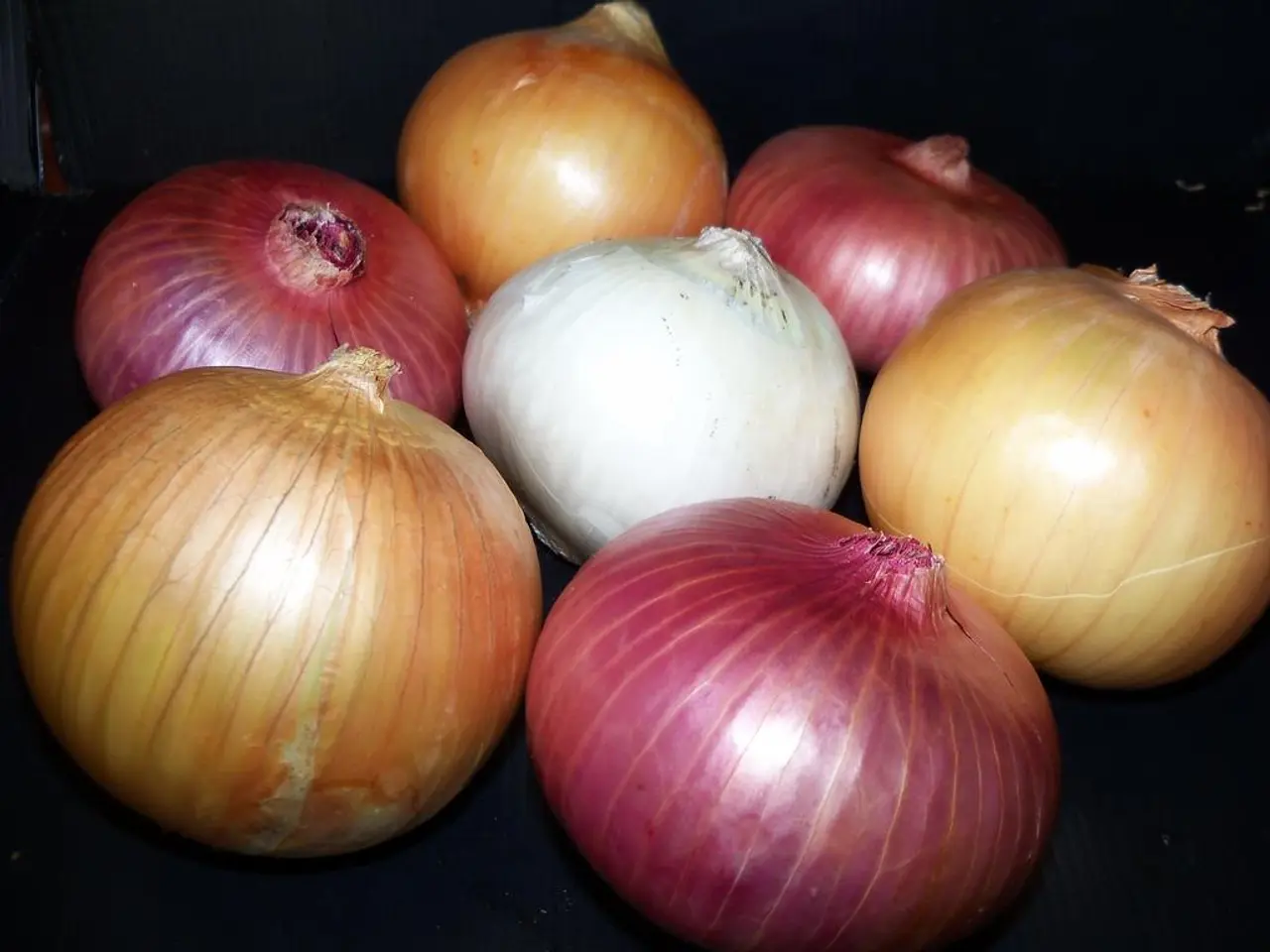Is your garlic of diminutive size?
Garlic, a staple in many kitchens, is a low-maintenance vegetable that loves attention but isn't demanding. With the right planting techniques, you can enjoy a bountiful garlic harvest come summer.
To plant garlic in the fall for a larger yield, timing is crucial. Plant your garlic about 4 to 6 weeks before your area's first hard frost or when the ground freezes, generally in the fall months of September to November, depending on your climate. This allows the roots to establish before winter dormancy.
Select the largest, healthiest cloves from big, robust bulbs for planting. Larger cloves produce larger garlic bulbs, so avoid any damaged or diseased cloves. Plant the cloves pointy end up about 2-3 inches deep in most climates. In colder zones, plant 3-4 inches deep to better protect the cloves from freezing.
Space the cloves 4-6 inches apart within rows, and make rows about 12 inches apart. Plant in a location with full sun and well-drained soil enriched with ample organic matter like compost. North-south row orientation helps maximize even sunlight.
Prepare the soil by loosening it 6-8 inches deep and mixing in plenty of organic compost for nutrients. Low-nitrogen fertilizers in fall (phosphorus and potassium rich) can be used to promote root growth. After planting, water lightly to settle the soil, keeping it damp but not waterlogged. Avoid overwatering to prevent rot.
Mulch with 3-6 inches of straw or organic material to retain moisture, suppress weeds, and protect the garlic through winter. In cold climates, garlic needs at least 10 weeks below +7°C for vernalization, a process important for garlic bulb formation.
In warmer regions, garlic can be vernalized by placing it in the fridge. In clayey or heavy soil, consider planting garlic in raised beds or pots to prevent root rot. Using small cloves for planting may result in small bulbs.
After harvesting, let the garlic sit in the shade for a couple of weeks to ripen, dry, and store for months. Homegrown garlic has a much stronger flavor than store-bought. With these simple steps, you're on your way to a successful garlic harvest!
Maintaining a home-and-garden lifestyle, you can incorporate gardening into your outdoor space by planting garlic in the fall. Select the appropriate location for planting, which should be a place with full sun and well-drained soil enriched with organic matter, and prepare the soil deeply with compost and low-nitrogen fertilizers before planting the largest, healthiest cloves, pointing the pointy ends up.




